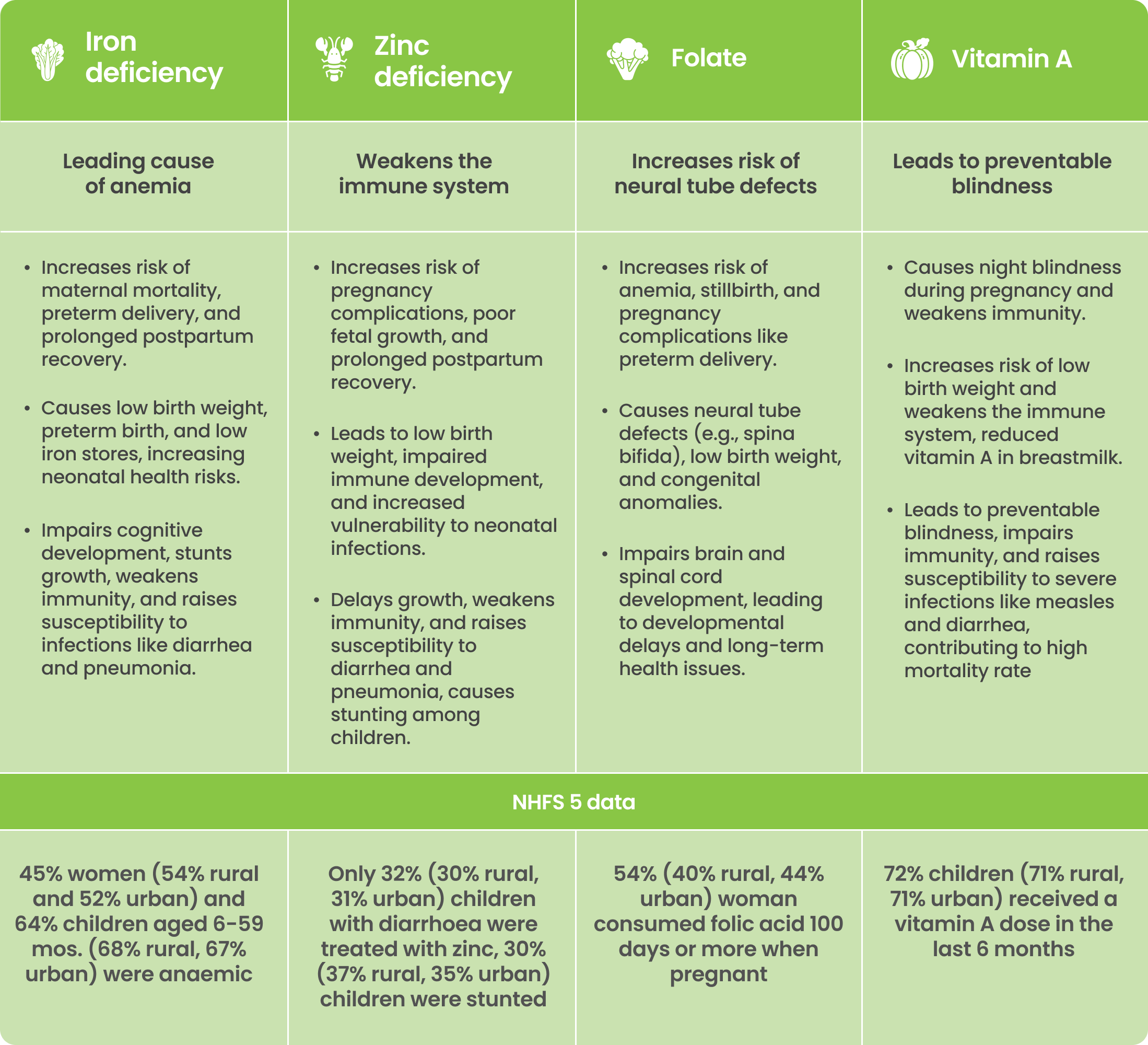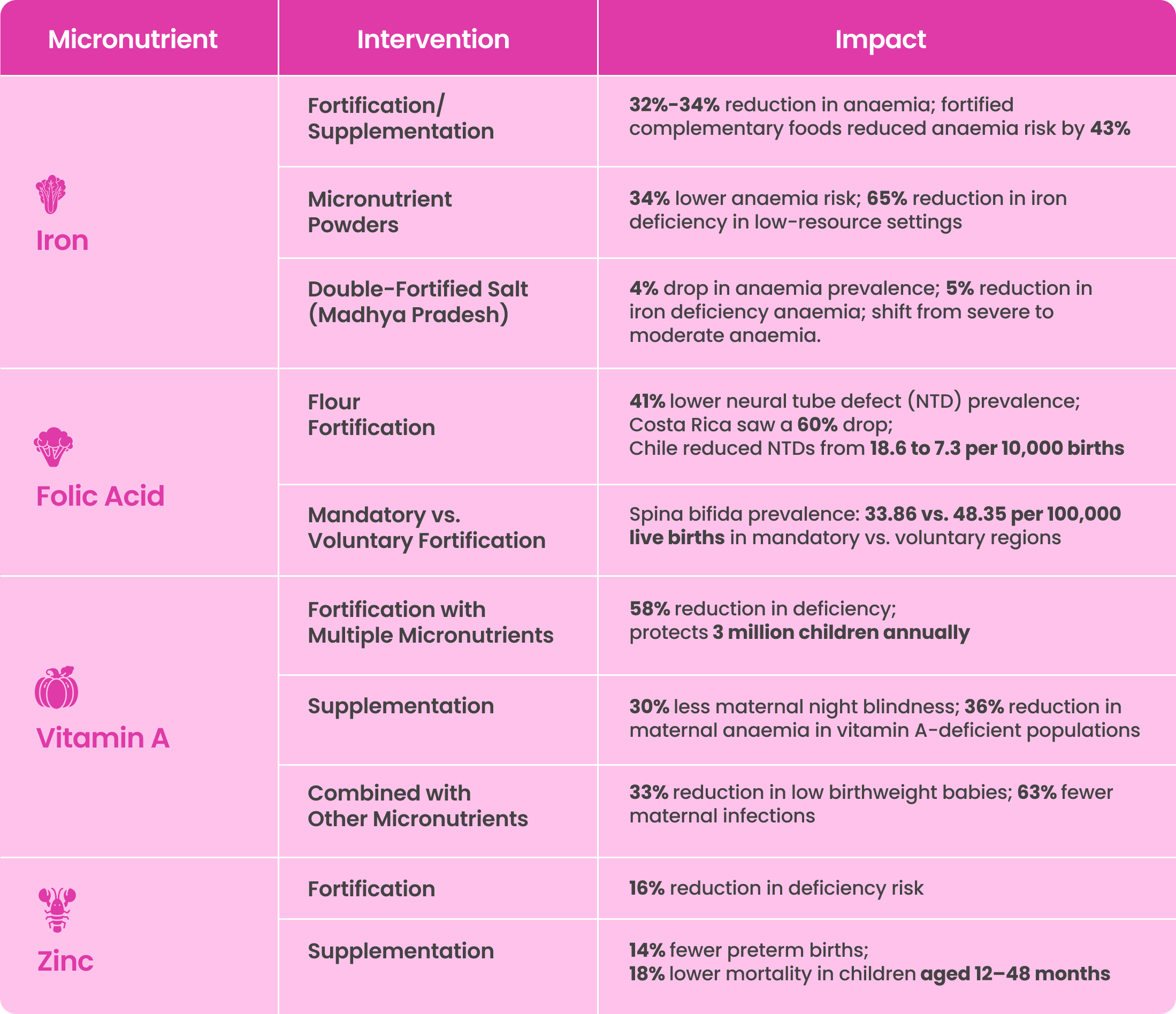

“Bytes: Practical Research for CSR” is a series by Give Grants designed to decode and demystify the extensive social impact research and data available in the form of clear and actionable insights for CSR practitioners in India.”
Food is life. We’ve all heard it and a bunch of folks around the world have felt it. The fortunate part is that access to food is available if not to all to the majority. The question arises, is food only filling the stomach or is it doing its part in growth and development?
The answer to this question is hidden much like “hidden hunger”. Hidden hunger is a term given to micronutrient malnutrition which has severe consequences on the health and development of mothers and children under the age of 5, with deficiencies contributing significantly to maternal and child mortality in India.
According to the WHO, micronutrients are required in very small quantities—less than 100 mg per day—but are essential for key biological processes such as hormone production, enzyme function, and overall growth and development. Deficiencies in key micronutrients such as iron, vitamin A, zinc, and folate pose serious public health challenges, as highlighted in the National Family Health Survey (NFHS-5) data.
The health impact of micronutrient deficiencies

Proven impact of micronutrient fortification and supplementation programs
Improving diets through diversification is the ideal way to address micronutrient deficiencies, but resource constraints, limited availability, and accessibility often make this approach insufficient. In such cases, food fortification, micronutrient supplements, and biofortification are widely recognized as effective and affordable complementary strategies to bridge the gap and meet nutritional needs.
What is Fortification and Supplementation?
Fortification involves the intentional addition of essential micronutrients, such as vitamins and minerals, to foods or condiments to enhance their nutritional value and address public health needs. This practice not only increases the nutrient content of commonly consumed staples but also helps replenish nutrients lost during food processing. As a well-researched and effective strategy, fortification plays a crucial role in preventing and reducing micronutrient deficiencies. Fortification can be categorized into four main types:
- Biofortification which uses technology to breed staple crops with enriched levels of micronutrients and is mainly focused on zinc, iron and provitamin A carotenoids.
- Mass fortification adds micronutrients to staple foods consumed by the general population, ensuring widespread nutritional benefits.
- Targeted fortification focuses on vulnerable groups, such as pregnant women and children, to address specific nutritional needs. Examples include fortified wheat flour with iron and folic acid provided through maternal health programs to prevent anemia and neural tube defects, offering a cost-effective solution for at-risk populations.
- Point-of-use fortification involves adding micronutrient powders directly to food at the time of consumption, often in households or schools. For instance, children receiving iron-containing
Supplementation provides micronutrients in concentrated forms, such as pills, capsules, or syrups, to individuals or groups at high risk of deficiencies. These include iron-folic acid tablets, vitamin A supplements, zinc tablets and ORS solutions.

The role of CSR
Driving Micronutrient Interventions: A Collaborative Approach
The effective implementation of fortification and supplementation programs requires a holistic strategy that integrates:
- Policy: Governments establish regulations mandating or encouraging fortification of staple foods.
- Production: Industries incorporate essential nutrients during food processing, ensuring quality and consistency.
- Distribution: Public systems, healthcare initiatives, and retail markets deliver fortified foods to those in need.
- Public Awareness: Community outreach campaigns promote understanding, acceptance, and adherence.
The Role of CSR Funding
Collaborative efforts, especially through CSR funding, are essential to complement government initiatives. CSR can:
- Drive innovation and fund localized fortification projects.
- Subsidize fortified foods for vulnerable populations.
- Support awareness campaigns to increase adoption and impact.
Current Gaps
Despite efforts, fortification coverage remains low:
- Edible oils, salt, and milk: Under 20% fortified.
- Wheat flour: ~3% fortified.
- Rice: 0.1%-0.2% fortified.
- Up to 60% of fortified food fails to reach low-income women and children, the most vulnerable groups.
CSR in Action
CSR initiatives have already demonstrated significant potential in addressing malnutrition:
- ITC’s Balposhan: This program focuses on combating child malnutrition through fortified foods, targeted interventions, and community engagement. By addressing nutritional gaps in underserved areas, ITC has created a scalable and impactful model.
- Nestlé Healthy Kids Programme: Through education and awareness campaigns, this initiative equips schoolchildren and their families with knowledge about nutrition and healthy eating habits.
[Infographic] Hidden Hunger: The Silent Crisis



